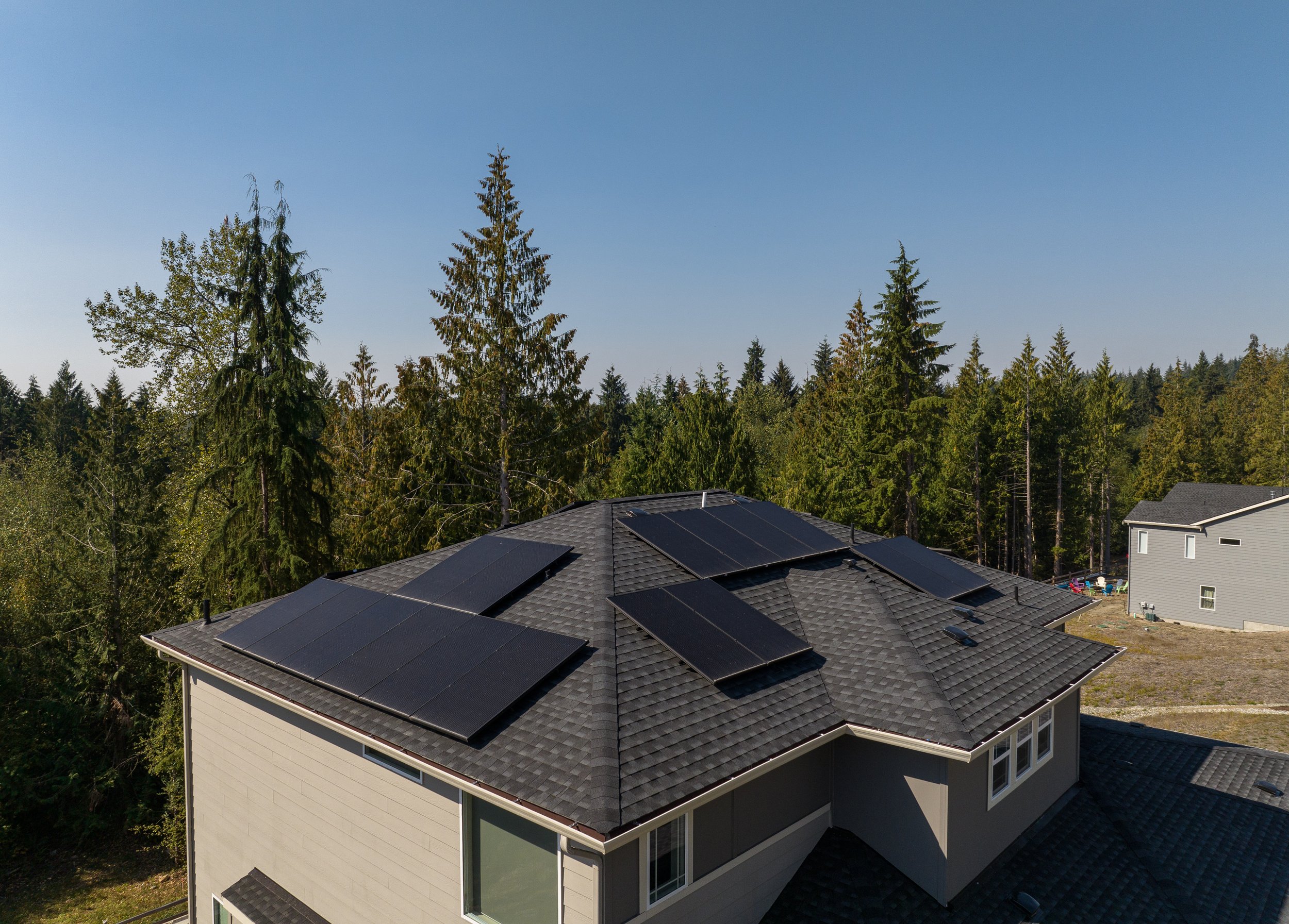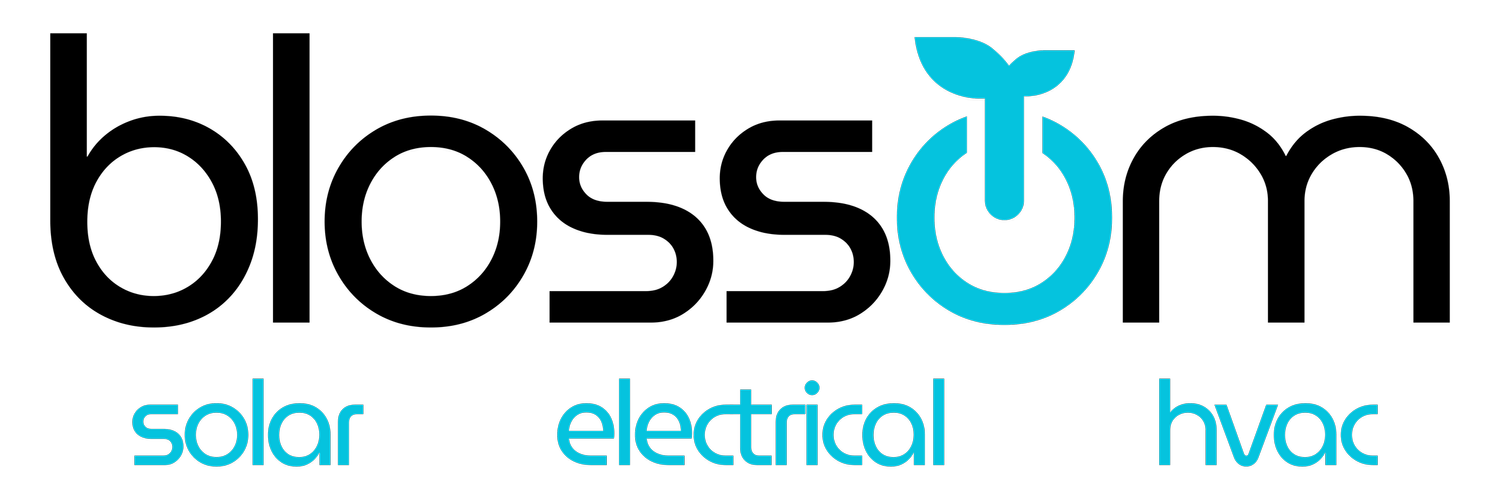
How does solar work?
Here’s a high level overview.
Solar panels work by converting sunlight into usable electricity. This is done through the use of photovoltaic cells, which are made of semiconductor materials, such as silicon.
When sunlight hits the surface of a solar panel, it causes electrons in the semiconductor material to become energized and flow in a current (Direct Current, or DC). This current is then captured and converted into usable electricity (Alternating Current, or AC) by the system’s inverters, or in our case, Enphase’s microinverters.
Solar panel systems can be connected to an electrical grid (your utility) or used as a standalone system (off-grid). In a grid-connected system, the electricity produced by the solar panels is fed into the home or business and excess energy is sent back to the utility to be banked as a credit for future use (Net Metering). In a standalone system, it’s not connected to a utility and the electricity is often stored in batteries for later use. Currently at Blossom, we’re exclusively installing grid-connected, net metered, solar and backup battery systems.
To maximize the efficiency of a solar panel system, it’s important to install the panels in an area with maximum sunlight exposure and ensure they’re properly oriented to capture the most sunlight possible with little obstruction.
OK, you can stop reading now. But if you’re like us and enjoy geeking out, keep reading.
As mentioned above, inverters are used to convert the Direct Current (DC) electricity produced by the solar panels into Alternating Current (AC) electricity that can be used to power homes and businesses, or fed back into the electrical grid for Net Metering.
The reason why this conversion is necessary is that most electrical appliances and devices in homes and businesses are designed to run on AC electricity. So, the inverter is a crucial component in the solar system, enabling the power generated by the panels to be used by the devices and appliances that require AC electricity.
The inverter also performs other functions, such as ensuring that the AC electricity produced is synchronized with the frequency and voltage of the electrical grid. This is important because the electrical grid operates on a specific frequency and voltage, and any deviation from this can cause damage to electrical equipment and appliances.
In addition to converting DC to AC electricity and synchronizing it with the grid, some inverters also have the ability to track the maximum power point of the solar panels. This means that they can adjust the voltage and current to ensure that the solar panels are operating at their maximum efficiency and producing the most power possible.
Inverters
One of the reasons why we use Enphase…
“Enphase microinverters give increased energy production resulting from MPPT (Maximum Power Point Tracking) harvested at the panel level. Enphase MPTT can result in as much as 26% more power production compared to any other type of inverter system.
“The Enphase Microinverter maximizes energy production by using a sophisticated Maximum Power Point Tracking (MPPT) algorithm. Each Enphase Microinverter individually connects to one PV module in your array. This configuration enables an individual MPPT to control each PV module, ensuring that maximum power available from each PV module is exported to the utility grid regardless of the performance of the other PV modules in the array. While an individual PV module in the array may be affected by shading, soiling, orientation, or PV module mismatch, each Enphase Microinverter ensures top performance for its associated PV module.” - Source: Enphase.com
Overall, the inverter plays a critical role in the functionality and performance of a solar panel system, and selecting the right type and size of inverter is important to ensure that the system operates efficiently and effectively.
Check out our blog for a comparison of Microinverters vs String Inverters.
How do we connect the solar to the electrical service?
There are two ways in which we connect solar to a customer’s electrical service. We’ll either land in the main service panel on a dedicated breaker, or we’ll connect with a line side tap. There are a few factors we consider when making this determination: the size of the bus bar and main breaker, the size of the solar system, and if there’s available space inside the main service panel (don’t worry, we’re usually pretty good at skinnying up the breakers in order to make room in the main service panel if needed).
To land on a breaker in the panel, we calculate 120% of the bus bar rating, subtracting the main breaker, and that gives us the amount of solar that can be connected. For a “solar ready” main service panel, 70A of solar can land in the panel.
(225A bus bar x 1.2) - 200A main breaker = 70A of solar
Generally speaking, this will guide whether or not we land in the panel. Otherwise, we’ll connect to the service wires between your meter and main service panel.
This was probably way more information than you bargained for.
Net Meters and Backfeeding Electricity in Washington
Net meters are used in grid-connected solar systems to measure the flow of electricity between the solar panels and the utility. They’re designed to track both the electricity generated by the solar panels and the electricity consumed from the grid.
When a solar panel system generates more electricity than is being used at a particular moment, the excess electricity is fed back into the grid and in the state of Washington, the utility banks that excess in a 1 kWh to 1 kWh ratio.
If the solar panel system generates more electricity than the homeowner is using, the excess electricity is credited to their account by their utility. In Washington state, the excess credits are banked for future use, either to be drawn down within that same billing period, or carried over. The credits can rollover from month-to-month, but not year-to-year. The net metering calendar in Washington state is from April 1st through March 31st every year.
At Blossom, we take a look at a customer’s annual consumption and try to offset 100% of their kWh’s and leverage the net metering benefit. Most of the energy is generated during those long spring and summer days and the excess pays down, and often times, eliminates winter usage.






